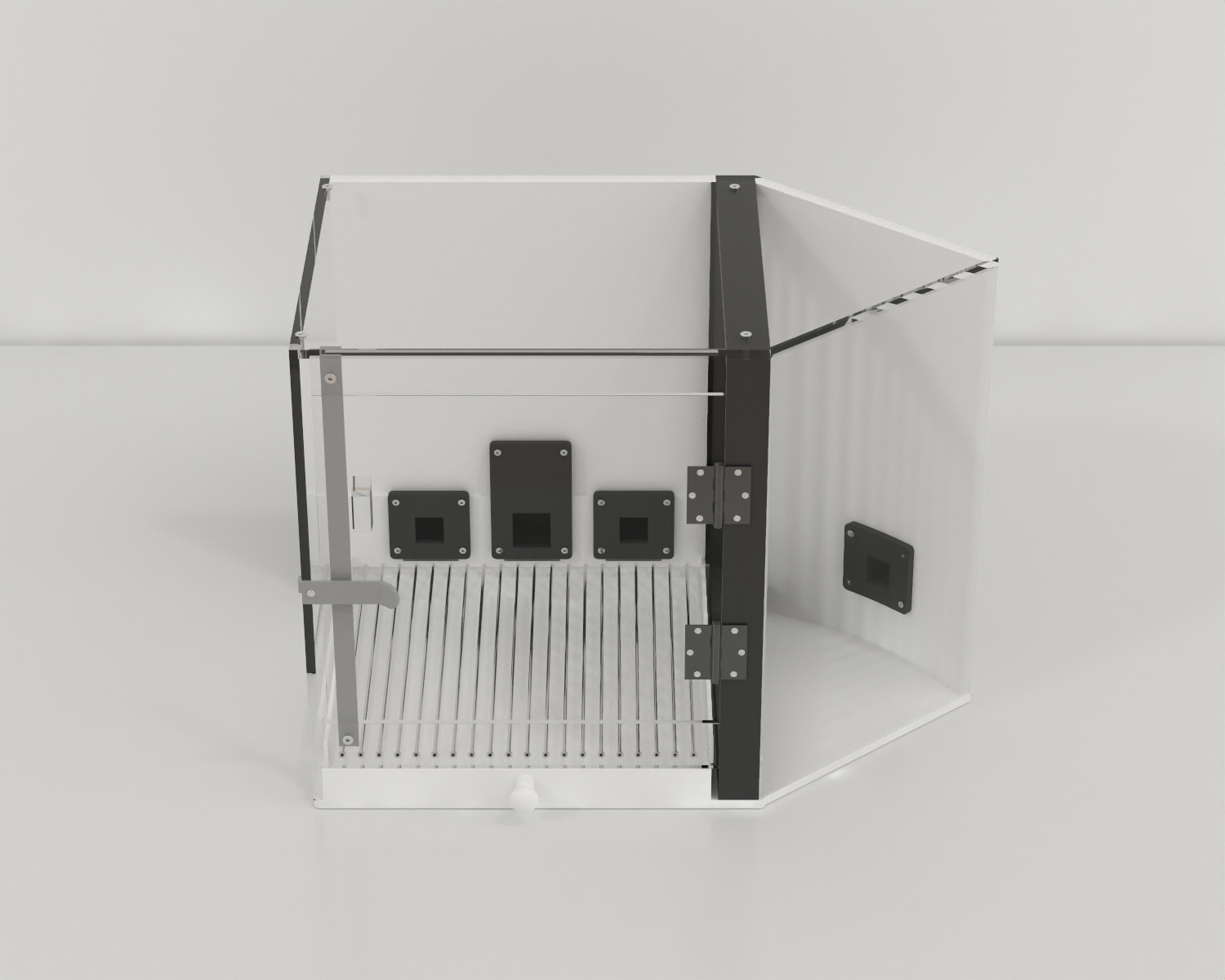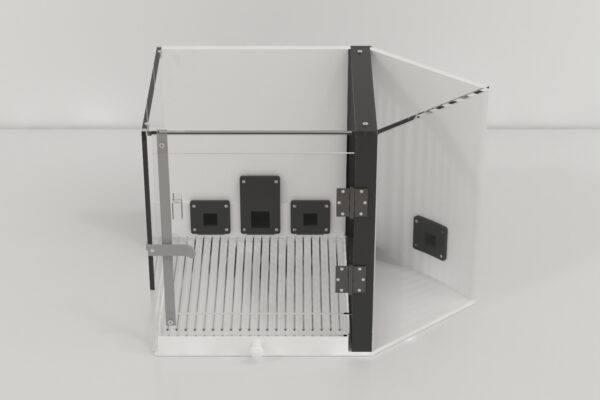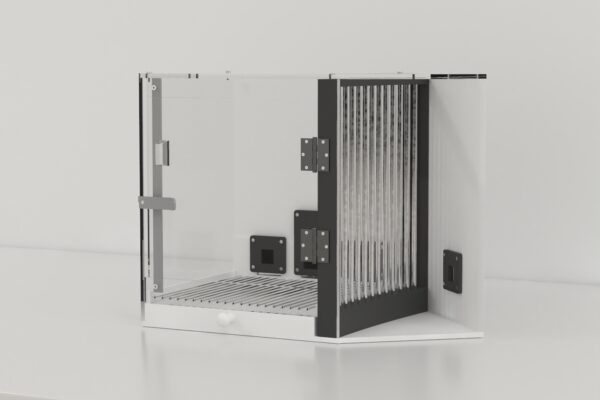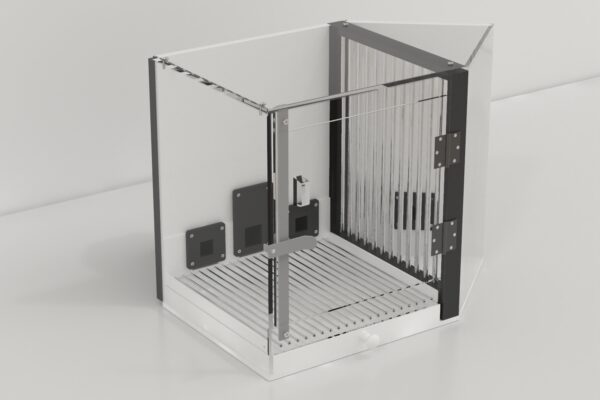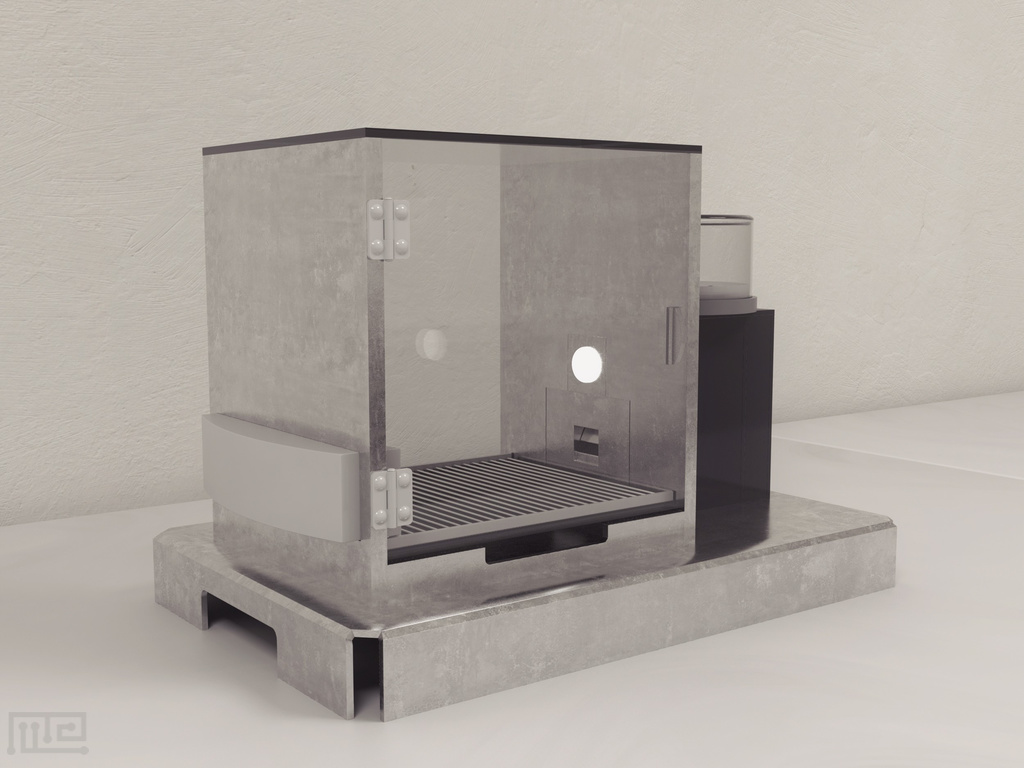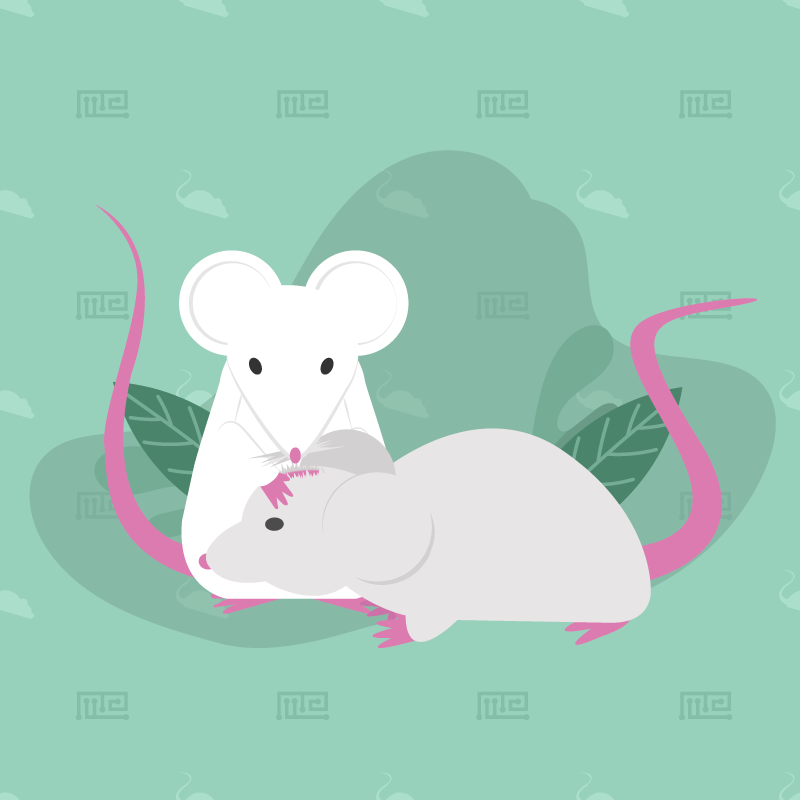Developed by Scheggia et al (2022), the Two Choice Social Decision Making Task was used to investigate the role of reciprocal connections between the cortex and amygdala in influencing prosocial and selfish decision-making in mice. By employing this apparatus through behavioral assays, the researchers elucidated how these connections contribute to social behaviors, shedding light on potential neural mechanisms underlying cooperative and self-interested choices.
The apparatus used for the social decision-making task consisted of a combination of standard operant chambers and custom-designed components to facilitate interactions between two mice, referred to as the “actor” and the “recipient.”
The actor’s compartment contains two nose-poke holes and a food magazine located in between to deliver food rewards to the actor. A mesh wall separates the actor and recipient. The recipient’s compartment contains a food magazine connected to a food dispenser, allowing the recipient to receive food rewards.
During the social decision-making task, the actor can choose between options that yield rewards for itself and rewards for the recipient. The interactions and choices made by the mice were recorded and analyzed to understand their decision-making processes in social contexts.
The setup allows for the controlled observation of prosocial and selfish behaviors while enabling direct interactions between the actor and the recipient.

